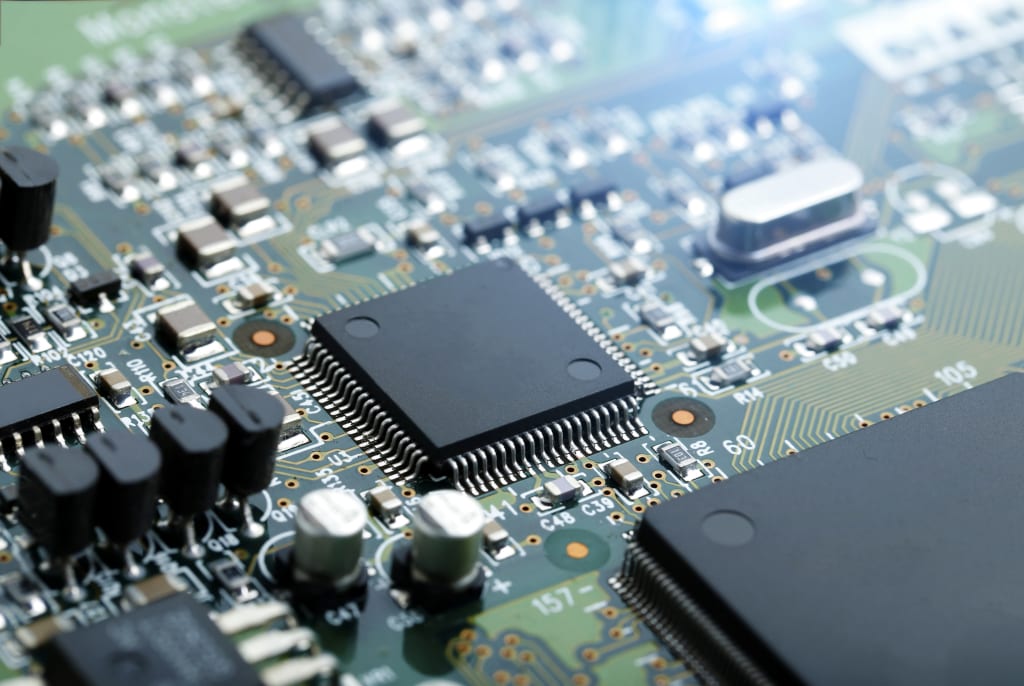Key Points Covered In the Electronic Components Market Study
Electronic Components Market Expected to Reach $1.0 trillion by 2032

Allied Market Research, titled, “Electronic Components Market by Type and Application: Global Opportunity Analysis and Industry Forecast, 2024-2032." The electronic components market was valued at $0.6 trillion in 2023 and is estimated to reach $1.0 trillion by 2032, growing at a CAGR of 6.9% from 2024 to 2032.
The market for electronics components is made up of a rich variety of fundamental devices that are indispensable for electrical circuitry and functionality. Such elements consist of integrated circuits, resistors, capacitors, transistors, sensors, diodes as well as optoelectronic devices among others. They can be utilized as the basic building blocks of electronic systems in different sectors including automotive, consumer electronics, healthcare, and telecommunications. This continuous innovation is driven by technological advancements leading to smaller, faster, and more efficient components. The growing demand for connected devices, Internet of Things (IoT) solutions, and renewable energy systems dominates the market. On the other hand, supply chain disruptions among other challenges indicate that the electronic components market trends will continue experiencing steady growth triggered by sustained technological improvements coupled with changing customer preferences.
The expansion of electronic parts is driven by an increasing number of people moving to cities and the growth of smart cities globally. Urbanization has led to increased traffic congestion, security threats, and information gaps due to the increased number of urban dwellers. As a result, smarter city initiatives employ ICT approaches for improved urban transport systems, interconnectivity infrastructures as well as better services. Among these options that have been designed, electronic components are particularly important in this regard; ensuring all social amenities continue with their operations even during the night hours. These signs can send messages in real-time, provide navigation support, send emergency alerts, or produce advertisements thereby preventing disappearance from towns and cities throughout the whole day. For example, such technologies can be uniformly integrated within existing IoT devices installed in various smart city infrastructure elements such as transport solutions and data analytics platforms thus increasing demand for sophisticated digital signage that facilitates more connected sustainable urban environments.
Nonetheless, there are serious barriers to the adoption of electronic components that include integration complexities with current infrastructure and ecosystems where they are supposed to be fitted. To do this perfectly, a smooth process requires advanced planning, comprehensive electronics engineering technical knowledge, and in some instances extensive changes or modifications. This is time-consuming and costly while also needing substantial resources in order to make it compatible with diverse hardware and software components leading to operational downtime, cost overruns as well as other technical glitches.
However, these obstacles notwithstanding; there are huge potential growth areas for electronic components especially in developing nations undergoing rapid urbanization and digitalization. These regions which have been characterized by changing tastes among consumers as well as government programs aimed at modernizing the infrastructure provide fertile ground for broad based use of electronic components in industries such as retail commerce, transportation services, and hotels. The resultant demand for electronic components that will come about when emerging markets adopt digital technologies to facilitate communication process, improve efficiency both in manufacturing sector and service delivery alongside enhancing customers experience will significantly define their role as drivers of global industrial growth.
The electronic components market report is segmented based on type, application, and region. On the basis of type, the electronic components market forecast is divided into active components, passive components, and electromechanical components. Based on application, the electronic components industry report is classified into consumer electronics, automotive, industrial automation, telecommunication, aerospace and defense, healthcare, energy and power, and others.
On the basis of region, it is analyzed across North America (the U.S., Canada, and Mexico), Europe (the UK, Germany, France, Italy, and the rest of Europe), Asia-Pacific (China, Japan, India, South Korea, and rest of Asia-Pacific), Latin America (Brazil, Argentina, and rest of Latin America), and Middle East and Africa (UAE, Saudi Arabia, and rest of Middle East & Africa).
The key electronic components company list profiled in the report includes Intel Corporation, Samsung, TSMC, Texas Instruments, Broadcom Inc, Bosch, NXP Semiconductors, STMicroelectronics, Skyworks Solutions, and Analog Devices. These key electronic components company listed in this market have adopted strategies such as product portfolio expansion, mergers & acquisitions, agreements, geographical expansion, and collaborations to enhance their market penetration.
According to Himanshu Jangra, Lead Analyst, Semiconductor and Electronics, at Allied Market Research, “The global electronic components market value is expected to witness considerable growth, owing to increase in demand for consumer electronics solution paired with rise in disposable income in emerging economies such as India, South Korea, Brazil, Dubai, and especially in Asia-Pacific and LAMEA region, which is expected to drive the market growth.”
Key Findings Of The Study
- The electronic components market insights is growing fast due to an increasing consciousness of the environment and the need to reduce carbon emissions.
- Demand for the electronic components market comes majorly from the consumer electronics sector, as there are smartphones, wearables, and gadgets everywhere that need high-performance compact parts.
- Competition in this market is intense with innovative firms fighting for space alongside well-established ones offering cheaper solutions.
- The Asia-Pacific region leads the charge, propelled by government investments, rapid urbanization, and robust consumer retail sectors, making it a prime market for electronics component growth.
About the Creator
Enjoyed the story? Support the Creator.
Subscribe for free to receive all their stories in your feed.






Comments
There are no comments for this story
Be the first to respond and start the conversation.